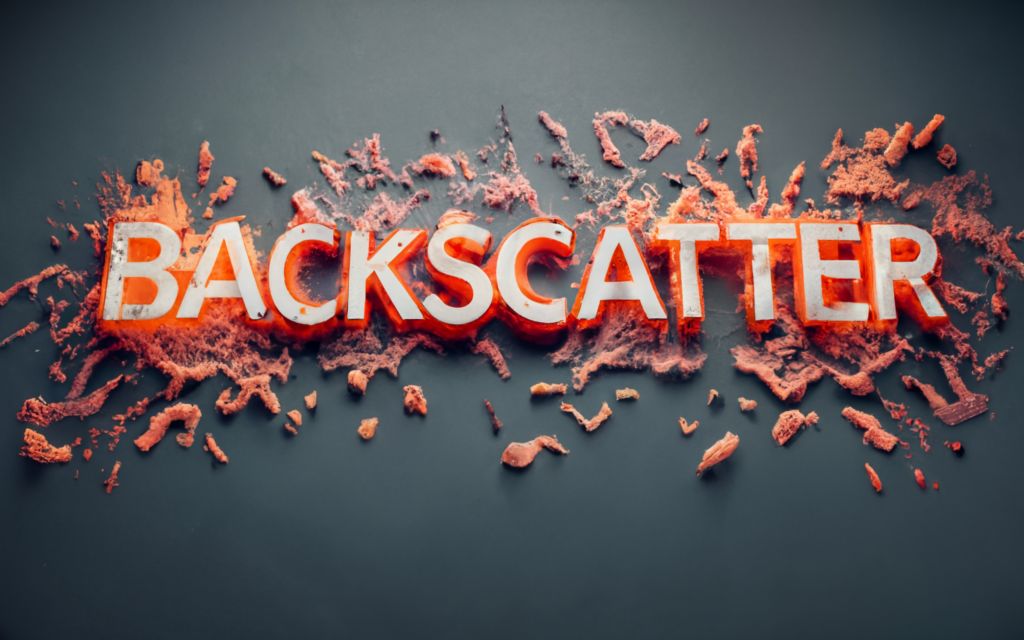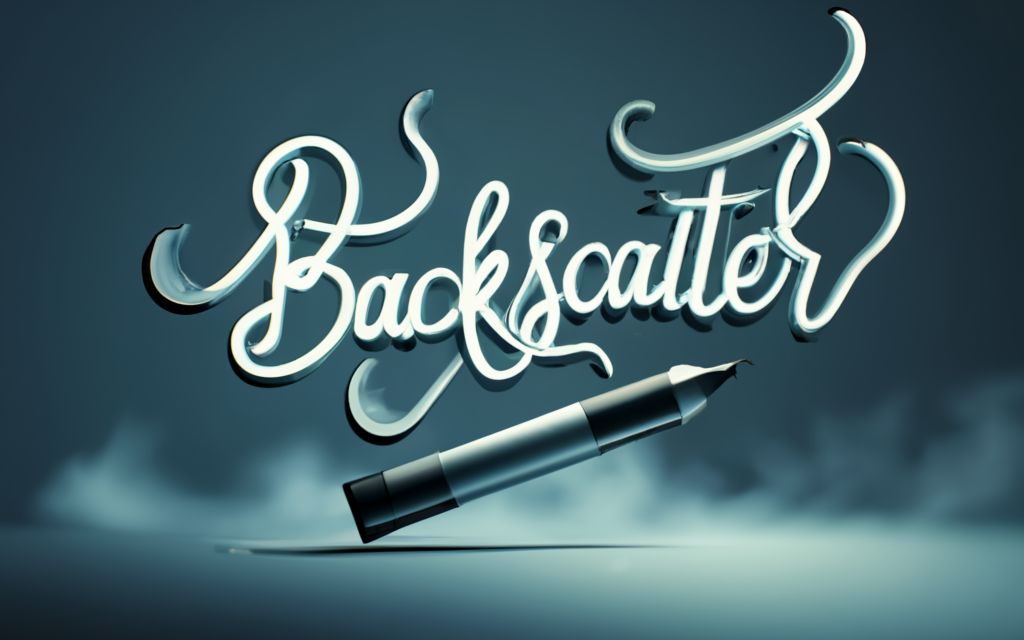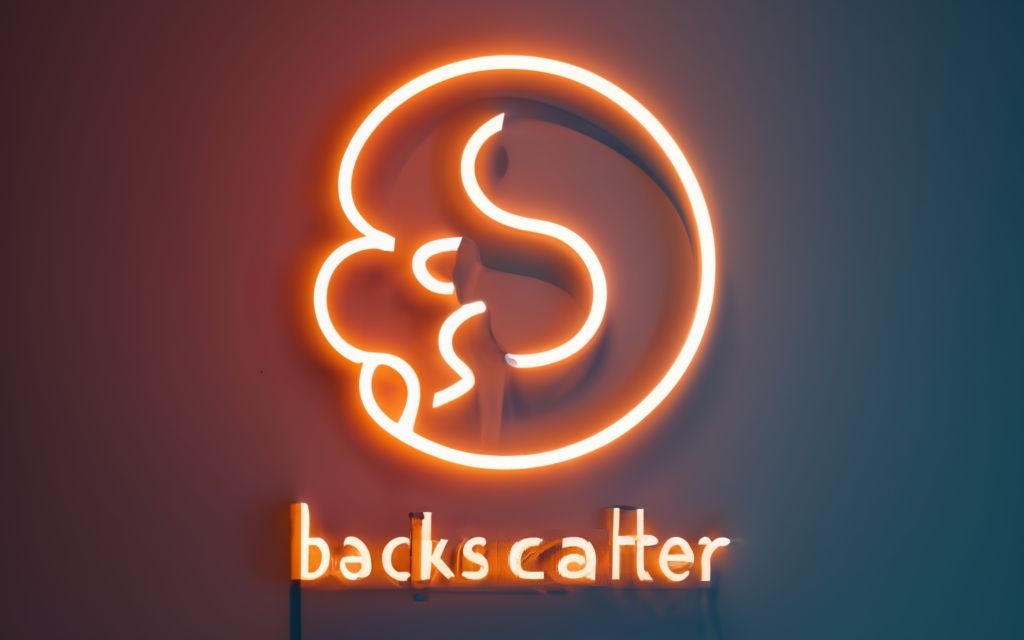Bounce! Out of nowhere, your inbox is slammed with error messages for emails you never sent. What gives? You’ve been backscattered! This phenomenon afflicts countless users, but remains shrouded in mystery. In this comprehensive guide, we’ll demystify backscatter and equip you to protect your inbox. Get ready to catch the truth and stop email blowback in its tracks!
What is Backscatter?
Backscatter can seem like a mysterious phenomenon, but it’s actually quite simple once you know what’s going on behind the scenes. Let’s shine some light on what exactly backscatter is, what causes it, and why you may be receiving these strange emails.
In short, backscatter refers to the automated bounce messages that get sent to innocent email addresses that never actually sent the original message. It’s essentially email collateral damage.
Here’s a quick definition:
Backscatter, also known as outscatter, blowback, or collateral spam, happens when spam or phishing emails with forged sender addresses get rejected or bounce back and the resulting automated notification gets sent to the innocent address that was spoofed, not the actual sender.
So how does this bounce backlash occur? Let me explain the basic process:
- Spammer X wants to send bulk promotional emails. To bypass spam filters, they spoof (forge) the sender address to look like your email address instead of their own.
- They blast out a gazillion emails on behalf of “you” to a big recipient list.
- Many of those recipients don’t exist, or their mail servers detect spam content and reject the message.
- Their mail servers send out automated bounce notifications to the spoofed sender address – which is your address!
- You suddenly start receiving tons of bounce emails for messages you never sent. You’ve been backscattered!
It’s like getting blamed for something you didn’t even do. Talk about rude!
This happens because spamware makes it possible to easily forge any sender address. Meanwhile, mail servers have no foolproof way to authenticate if an incoming message’s sender is valid.
Frustratingly, backscatter can happen to anyone with an email address that spammers grab off the internet. Even telecom giants like AT&T get spoofed! No one is immune to this obnoxious phenomenon.
The flood of pointless bounces waste your time and clutter your inbox. No real harm done…unless enough bounce emails get sent to a domain to trigger concerns of spamming activity. Then things get serious.
So in summary, backscatter refers to the misdirected bounce messages innocent email users receive when their address gets spoofed by spammers or malware. It goes by other names like collateral spam, outscatter, and blowback too. But regardless of terminology, the bottom line is you’re getting spammed with automated emails intended for someone else!

Types of Backscatter
Like a boomerang, backscatter refers to signals that bounce back to their origin. This occurs across various technological mediums, but there are three main categories:
- Email Backscatter
- Radar/Sonar Backscatter
- Optical Backscatter
Let’s break down the unique characteristics of each type:
Email Backscatter
As discussed prior, email backscatter involves spoofed addresses and misdirected bounce messages. Specifically:
- Spammers and malware creators often forge the sender address in emails to bypass filters. This disguises the origin and makes their bulk messages appear more legitimate.
- When recipients’ mail servers reject these fraudulent emails, they automatically generate bounce notifications.
- But because the sender address was spoofed, these bounce messages go to whoever’s address was forged – not the actual spammer!
- The innocent user receives a flood of error notifications for emails they never sent. Frustrating indeed!
This type of backscatter manifests as a sudden onslaught of unsolicited and nearly identical bounce emails sent to your inbox by various mail servers. They seem to appear out of the blue, and are not things you signed up to receive.
Radar/Sonar Backscatter
In contrast, radar and sonar backscatter refers to the reflection of radio or sound waves off an object.
- Radar and sonar systems send out pulses that bounce off targets and return signals to the source.
- The strength of the reflected signal provides details about the object’s size, shape, and composition.
- Hard, smooth surfaces reflect more strongly than soft, bumpy surfaces. A metal ship returns a stronger signal than a wooden boat, for example.
- Analyzing the backscattered waves enables identification and mapping of objects that radar/sonar beams hit, like enemy submarines, planes, icebergs, or even the ocean floor!
So in this context, backscatter is the deliberate, measurable reflection of radar or sonar. It’s an essential tool for detection and analysis.
Optical Backscatter
Optical backscatter refers to light waves reflecting off tiny particles in a medium like air or water.
- A beam of light aimed into a fluid will bounce off any suspended particles, scattering back towards the light source at various angles.
- The amount of backscatter indicates the concentration and size of particles present.
- It’s used to detect air pollution, flares, aerosols, or other particulates that allow inference of local conditions.
- Medical applications leverage optical backscatter too. Laser pulses can profile various tissues and blood components.
- This is the principle behind non-invasive techniques like pulse oximetry, which measures oxygen saturation.
So in summary, while email backscatter is a headache, radar, sonar, and optical backscatter are ingenious applications that provide insights not otherwise possible!
Sources and Causes of Email Backscatter
Now that you know what backscatter is, let’s explore why it happens in the first place. There are a few key sources and causes of email backscatter:
Spammers Forging Addresses to Bypass Filters
The #1 cause of backscatter is spammers and scammers forging innocent addresses as the sender when blasting out promotions or malware.
- They do this to bypass spam filters and seem more legitimate, spoofing well-known domains like banks or big brands.
- Grabbing addresses from the web or public databases, they “impersonate” random people and companies.
- When their spam gets rejected, bounces go to the impersonated victim, not the actual spammer. Sneaky!
Misconfigured Mail Servers Handling Bounces Improperly
Another common cause is mail servers that are misconfigured to handle bounces incorrectly:
- They should only send bounces back to authenticated owners of the sending domain.
- However, some instead accept any incoming mail, then generate bounces to the spoofed sender address specified.
- This passes backscatter onto innocent users whose address was forged. Proper config prevents this.
Lack of Sender Authentication like SPF, DKIM, and DMARC
Finally, lack of sender authentication also enables backscatter:
- Mail protocols like SPF, DKIM, and DMARC validate senders and reject unauthorized use of domains.
- But if a server doesn’t check these protocols, spam can sneak through “on behalf” of a forged domain.
- When the receiving server bounces this unauthenticated spam, backscatter strikes innocent inboxes.
The common thread is that backscatter preys on vulnerabilities like lack of authentication, misconfigured servers, and the ease of forging addresses. Solving these issues protects against backscatter and improves email for everyone.

Problems Caused by Email Backscatter
Backscatter isn’t just an annoyance – it can cause real headaches for innocent email users and domains victimized by this collateral spam.
Inbox Overflow for Innocent Users
The most obvious issue backscatter creates is a clogged inbox for individuals whose address was spoofed.
- Getting hundreds or thousands of sudden bounces can rapidly consume inbox space.
- It’s like getting a torrential downpour of error messages you didn’t ask for and don’t want.
- Attempting to unsubscribe from each is futile. The only option is manual deletion.
- With enough volume, critical personal or work messages can easily get buried under the deluge.
Potential Blacklisting of Innocent Domains/Addresses
At a domain level, high volumes of backscatter can also lead to blacklisting if misinterpreted as active spamming.
- If enough unexpected bounces come from a domain, recipients may complain and report the domain for spam activity.
- Some providers blacklist domains automatically if bounce thresholds are exceeded.
- Being blacklisted can block both inbound and outbound email, crippling business functions.
Wasted Time and Resources Handling Invalid Bounces
Finally, IT teams waste time and resources investigating and handling the invalid bounces.
- Time spent analyzing backscatter is time not spent on productive work.
- Servers processing high backscatter loads may degrade performance.
- Money is wasted on storage for useless messages and personnel time to address them.
- There can also be legal concerns if backscatter conveys problematic content.
In summary, backscatter inflicts unnecessary burdens through overstuffed inboxes, blacklisting risks, and wasted time and money. But solutions exist to slay this beast!
Reducing and Preventing Backscatter
The good news is backscatter can be reduced and prevented through various mitigation strategies. Let’s explore some proven techniques and best practices:
Rejecting at Initial SMTP Connection Stage
The first opportunity to stop backscatter is during the initial SMTP connection:
- When receiving an email, the server can reject it right away with a 5xx error if it fails any validation checks.
- This allows the original sending server to generate a proper bounce to the valid sender.
Some key examples of connection-stage rejection include:
- Recipient validation – Reject if the receiving address is unknown or improper.
- SPF/DKIM/DMARC failure – Reject if sender authentication is invalid.
- Blocklists – Reject if sender is on a blacklist for prior spam activity.
- Greylisting – Temporarily reject and retry delivery later.
Rejecting questionable emails before acceptance prevents triggering downstream bounces to innocent users. Do this whenever possible.
Authenticating Senders with SPF, DKIM and DMARC
Proactively authenticating legitimate senders also avoids backscatter risk:
- SPF verifies the server sending a message is authorized by the domain.
- DKIM cryptographically signs messages to prove they haven’t been tampered with.
- DMARC aligns SPF and DKIM to prevent spoofing.
Enforcing these protocols blocks unauthorized use of your domain in spam blasts. Then illegitimate bounces have no forged address to send to.
Checking Bounce Recipient Validity
If a message passes initial checks but later generates a bounce, double check the bounce recipient:
- Review the headers and SPF/DKIM status to confirm legitimacy.
- Only send to an address you can confirm ownership of.
- If uncertain, safely drop the message instead of risking backscatter.
Safely Dropping Invalid Messages
For questionable situations with no authenticated recipient, silently drop the message.
- Add “dev/null” or a junk folder as the recipient to dispose without bouncing.
- This also complies with RFC 5321 guidance on uncertain bounces.
- Stopping invalid bounces prevents collateral damage.
Filtering Likely Backscatter as Spam
Finally, use spam filters to catch obvious backscatter:
- Leverage rules to identify characteristics of backscatter patterns.
- Tag or delete these outright instead of wasting time on them.
- Tools like SpamAssassin help filter backscatter “junk”.
The combination of these technical and policy controls provides overlapping protection against backscatter. Apply them diligently to avoid email blowback!

Uses and Applications of Non-Email Backscatter
While email backscatter is disruptive, other forms like sonar, radar, and optical backscatter offer useful real-world applications:
Sonar/Radar Backscatter
Analyzing the reflection of sonar and radar signals enables:
- Seabed Mapping – Stronger returns from rough, rocky areas vs soft sediment. Creates detailed bathymetric maps.
- Object Detection – Identify location, speed, material, and shape of vessels, planes, weather patterns and more.
- Composition Analysis – Hard, smooth surfaces reflect more than soft, irregular ones. Determines material properties.
- Target Tracking – Distinguish artificial objects from natural features. Critical for navigation and defense.
Optical Backscatter
Studying the scattering of light beams can determine:
- Particle Concentration – More backscatter indicates higher density of particles in a fluid or gas.
- Pollution Monitoring – Correlates backscatter to levels of smoke, smog, aerosols, and more.
- Product Analysis – Assess purity, consistency, and uniformity of materials like pharmaceuticals.
- Biomedical Properties – Assess tissues, measure blood oxygenation, diagnose cancers by scattering profile.
Medical Applications
Some examples of medical optical backscatter uses:
- Pulse Oximetry – Measures oxygen saturation in blood via differential absorption.
- Skin Cancer Detection – Analyzes scattering patterns to identify malignant tissues.
- Blood Analysis – Assesses red blood cell morphology and white blood cell counts.
- Ophthalmology – Detects retinal issues and intraocular tumors from backscattered light.
So while email backscatter is simply annoying, these applications leverage signal reflection to enable remarkable technologies!
Key Takeaways and Conclusions
Let’s recap the key points about backscatter and part with some final thoughts on this bizarre phenomenon:
Definition and Causes
- Backscatter refers to automated bounce messages sent to innocent users from spoofed emails.
- It’s caused by spammers forging addresses, misconfigured mail servers, and lack of sender authentication.
- But while disruptive, it’s manageable through various preventative measures.
Mitigation Strategies
- Reject suspicious messages at the initial SMTP connection stage.
- Use SPF, DKIM, and DMARC to validate legitimate senders.
- Carefully verify bounce recipient addresses.
- Silently drop uncertain messages instead of bouncing.
- Filter likely backscatter emails as spam.
Uses in Other Fields
- Sonar, radar, and optical backscatter enable advanced technologies through signal reflection analysis.
- These applications provide environmental monitoring, medical diagnostics, product analysis, and more.
Final Thoughts
While we can’t eliminate email spoofing and spam entirely yet, following cybersecurity best practices goes a long way. Take preventative measures, and don’t get discouraged if you encounter some backscatter. Just filter it out and go on with your inbox.
And next time you get an odd bounce, remember it’s likely meant for a shady spammer, not you! Backscatter may seem mysterious at first, but it doesn’t have to be a troublesome enigma.

Key Takeaways
To recap this comprehensive guide on demystifying backscatter:
- Backscatter refers to bounce messages received by innocent users from spoofed emails. It appears as an onslaught of unsolicited and identical automated messages.
- It’s caused primarily by spammers forging addresses, misconfigured mail servers that improperly bounce messages, and lack of sender authentication.
- Types include email backscatter, radar/sonar backscatter, and optical backscatter. Only email backscatter is disruptive.
- Backscatter can overflow inboxes, cause domain blacklisting, and waste time handling invalid bounces.
- Prevention involves rejecting early, authenticating senders, verifying recipients, dropping uncertain bounces, and filtering likely backscatter as spam.
- Non-email forms of backscatter enable advanced technologies through analyzing signal reflections for detection, mapping, monitoring, and diagnosis.
- While annoying, backscatter can be mitigated through proactive security measures and configuration best practices. Don’t let it overwhelm your inbox!
Let me know if you would like me to expand or modify this key takeaways section in any way. I’m happy to make any adjustments to ensure it effectively summarizes the core topics covered in the article.
Frequently Asked Questions
Still have some lingering questions about backscatter? Here are answers to some commonly asked questions:
Q: What is backscatter?
A: Backscatter refers to automated bounce messages sent to an innocent email address that did not actually send the original message. It happens when spammers forge email addresses, causing resulting bounce notifications to be misdirected.
Q: What causes backscatter?
A: The main causes are spammers/scammers forging addresses to bypass filters, misconfigured mail servers that improperly bounce messages, and lack of sender authentication allowing spoofing.
Q: How can I prevent getting backscatter?
A: Protect your domain with SPF, DKIM, and DMARC authentication. Avoid posting your email address publicly. Use an alias or “email (at) domain(dot)com” format online. Also report any backscatter to your email provider.
Q: Why did I get a backscatter message?
A: A spammer likely forged your email address as the sender, so when their spam was rejected the bounce notification went to you instead of them. The message you received was intended for the actual spammer, not your inbox.
Q: Is backscatter illegal?
A: While frustrating, receiving backscatter itself is not illegal. However, forging addresses to spam and trigger bounces is often illegal. Backscatter also violates many ISP terms of service.
Q: Is backscatter dangerous?
A: Backscatter itself poses no real danger, just inbox clutter. But the spam emails that trigger it may contain malware or phishing attempts that can be dangerous. Use caution opening any messages from unknown senders.
Q: How can I stop backscatter messages?
A: Unfortunately you cannot stop spammers from forging your address. But you can use filters to delete likely backscatter automatically. Reducing your email address’s exposure online may also help.
Let me know if you would like me to add any other frequently asked questions and answers to cover common backscatter concerns.

